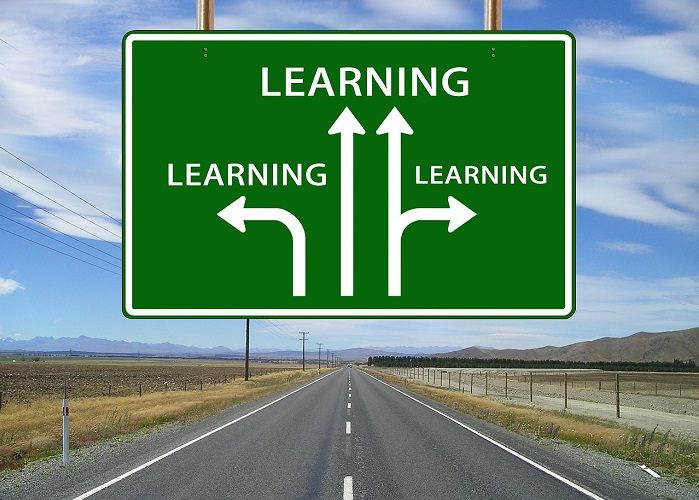- MN ABE Connect
- Archive
- Administrator PD: Highlights and Updates
 February 14, 2022
February 14, 2022
Administrator PD: Highlights and Updates
Lindsey Pust, Numeracy & Special Projects CoordinatorThis year, we’ve created webinar spaces for administrators to gather and discuss topics pertinent to the management of ABE programs. The purpose of the Administrator Webinar Series is to address daily challenges and questions that administrators may face.
Supporting & Supervising Staff at a Distance
 During our first webinar in October, So How’s It Goin’ Out There? Supporting & Supervising Staff at a Distance, administrators shared challenges related to remotely supervising staff and examples of ways to continue to connect with staff members remotely.
During our first webinar in October, So How’s It Goin’ Out There? Supporting & Supervising Staff at a Distance, administrators shared challenges related to remotely supervising staff and examples of ways to continue to connect with staff members remotely.
We had the opportunity to learn from Kirsten Fuglseth (Northwest Service Cooperative) and Ann Trochlil (Glacial Lakes Consortium), both of whom entered the world of remote supervision long before the pandemic even began.
Takeaways:
- Streamline and centralize communication. Whether through setting up a web page or utilizing Google Drive to house all forms, policies, and important documents; emailing program updates at the same time each week; or creating a monthly newsletter, having an established norm for when and where important information can be accessed is essential.
- Set clear expectations and boundaries. Monitoring job performance when you are not physically present on a regular basis can be tricky. However, there are things you can do to create an environment of trust and integrity. For example, establish the norms of always assuming positive intent and giving negative feedback exclusively in a one-to-one setting, or commit to following up on issues or concerns immediately when brought to your attention. Both of these examples provide opportunities for authentic feedback in a trusting environment.
- Honor your staff’s expertise and contributions. Provide opportunities for staff to take on leadership roles within your consortium, give them decision-making power in their local areas (they are the experts of those specific regions after all!) and ask for their input on all consortium level plans.
- Value the person behind the position. It’s essential to build relationships with staff and foster a culture where staff are building relationships with their peers. Build time into online meetings for staff to connect and visit like they might have in the hallways. Provide professional development opportunities which balance program needs and individual teacher interests/strengths. Share birthdays on a monthly calendar so that staff can send birthday wishes to each other even though miles apart, or set up a social media group that is only open to staff members in order to create a space for staff to share resources and ideas, and to connect more regularly. Have an overnight work retreat, and intentionally schedule optional social activities in the evening.
Learning Models: How to Make Decisions and Shift as a System
 In November, we held a second webinar to give administrators the chance to connect with around the topic of selecting learning models and guiding staff through system shifts: Building the Ship While Sailing It! Learning Models: How to Make Decisions and Shift as a System.
In November, we held a second webinar to give administrators the chance to connect with around the topic of selecting learning models and guiding staff through system shifts: Building the Ship While Sailing It! Learning Models: How to Make Decisions and Shift as a System.
Karen Wolters (Mankato ABE) and Renada Rutmanis (St. Paul-Hubbs Center) joined us as panelists and shared valuable insights about how their programs are tackling the challenging but essential question of what programming should look like post-pandemic shutdown.
Key themes from the discussion:
- Keep it learner-centered. Whatever decisions are made regarding programming, learner needs must be the central component. Survey students to ask what kind of learning model is ideal for them. Not only does this address learners’ needs—which is why ABE exists—but a learning model is more likely to ensure attendance if the delivery model and class times accommodate learners’ schedules and busy lives.
- Be willing to experiment. There are a lot of factors to consider when choosing and implementing learning models, especially when embarking into uncharted territory. Trying something and then needing to make tweaks is normal. Additionally, if there are instructors in your program who like to experiment with cutting-edge teaching practices, let them lead the way and work out some bumps in the road before implementing program-wide changes.
- Look at the big picture. Take time to gather data specific to YOUR context so that you can make the most informed decision about what learning models to adopt. For example, consider factors presented in the following slide:
- Be flexible. Not only is it important that staff and administrators stay flexible in the ever-changing landscape of teaching, but it is also important to consider the flexibility of the programming we offer. How can we creatively use our resources to offer flexible learning options for our students to better meet a variety of learner needs? Consider the following model examples:
- Embrace the “new normal.” Change is uncomfortable, especially when it requires moving from theory to practice. Recognize that students and staff need grace during this time, as change can bring up feelings of fear and grief. However, recognizing that serving our learners best means NOT going back to the way things were can help ease the transition.
Perhaps the best example of this is the essential use of technology: whether embracing a HyFlex model to accommodate more learners’ schedule and preferences or whether requiring all learning materials to be accessed from an LMS—even for in-person classes—we are setting the expectation that digital literacy is vital in the world now and for the future. Plus, should we ever have to transition to solely online learning again, students and teachers alike will be well-prepared!
Administrator Webinar Series Continues This Month!
Join us for our third and final webinar in this year’s series!
Where Shall We Begin? Planning and Budgeting for the Coming Year
February 23, 2022, 1:00-2:30pm
Decisions, decisions… It’s that time again; planning for the coming school year is upon us! Join us for a time of discussion and learning around making plans and budgeting strategically for the 2022-2023 school year. Panelists from various programs around the state will share their puzzles and strategies, with ample time for conversation.
Administrator session at Statewide Virtual Conference
In lieu of our fourth webinar in this series (originally scheduled for April 20), there will be an administrator session at the Statewide Virtual Conference on April 22.
- Conference registration will be posted on the Events Calendar in March.
Mighty Networks
Also, be sure to join our Administrators/Managers group on Mighty Networks! It is a great place to ask questions of and share resources between fellow administrators.
- Learn more about how to join Mighty Networks here.
Newsletter Signup
Get MN ABE Connect—the official source for ABE events, activities, and resources!
Sign UpArticle Categories
- ABE Foundations/Staff Onboarding
- ACES/Transitions
- Adult Career Pathways
- Assessment
- CCR Standards
- Citizenship
- COVID-19
- Cultural Competency
- Digital Literacy/Northstar
- Disabilities
- Distance Learning/Education
- ELA
- Equity/Inclusion
- ESL
- HSE/Adult Diploma
- Listening
- Math/Numeracy
- Mental Health
- Minnesota ABE
- One-Room Schoolhouse/Multilevel
- Professional Development
- Program Management
- Reading
- Remote Instruction
- Science
- Social Studies
- Speaking/Conversation
- Support Services
- Teaching Strategies
- Technology
- Uncategorized
- Volunteers/Tutors
- Writing